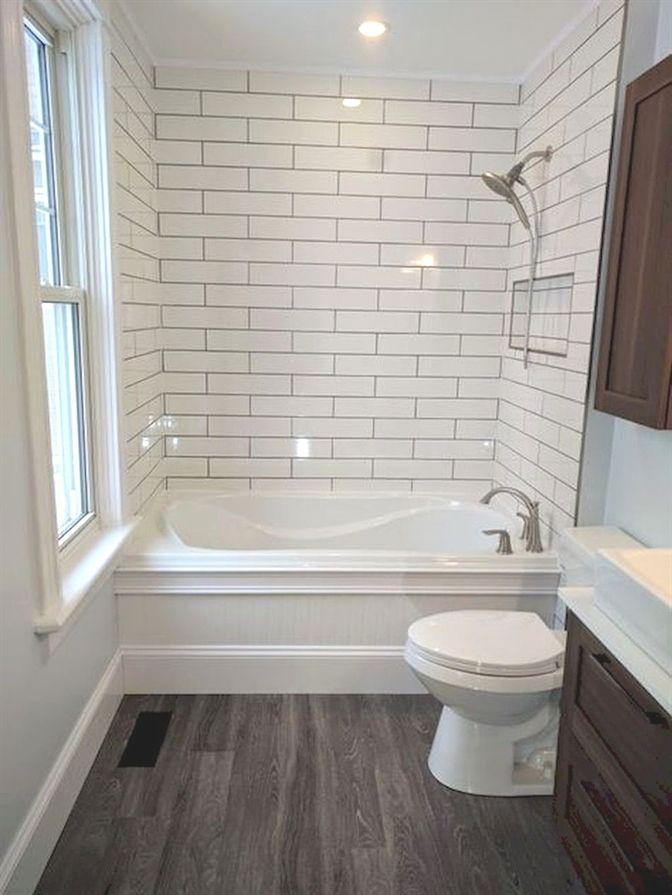A dated bathroom can become a charming period piece. The renovation spanned three years, as I was busy and had started demolition prematurely in my excitement for the project. This was far longer than the project needed to take.
I approach my projects in the following manner, by assessment, strategy, design, execution and evaluation. The process is not always linear.Sometimes demolition provides key information that prompts a reassessment. This is what I call the mushroom factor. With more knowledge, the project mushrooms out of control and budget, a common renovation problem.
Working with a small, 6 1/2 square foot bathroom brought challenges. The clawfoot tub was boxed in for a modern streamlined look. Original light fixtures and plaster walls were gone, wallpaper pieces made from historic salmon can labels were damaged. However, the bathroom had original door and window moulding, wainscot, radiator, one panel door and hardware, the clawfoot tub and sink. The bathroom was dated, terminally cute and needed a period look.
My strategy was to minimize cost by retaining historic elements, not moving the placement of the plumbing fixtures. I purchased needed items at the salvage yard. It was essential to minimize professional labor of our plumber and carpenter. As always, do no harm to the historic structure and document work.
My design plan was a 1915 bathroom with polished nickel hardware and well-executed detail. The room would feature a cream trim, rich gold paint, white plumbing fixtures and light shades. I would have so loved to include a mosaic tile as well, but it was out of my budget.
Execution of the plan required careful deconstruction, working from the top down. Gathering supplies at the salvage yard takes patience and luck!
For the ceiling paint, I chose a warm white. The bathroom’s 1980s light fixture was replaced with a secondhand antique. Some parts were missing and rewiring was needed. I found a simple ceiling medallion, held in place by a fixture canopy. This isn’t permanent, nor is it historically accurate, but I like the look.

The room’s cove molding is a find from the salvage yard. Since the walls are not square, we used corner blocks at a carpenter’s suggestion. Installation of the cove molding was a breeze. This is was a great tip!
Wallpaper is a great place to express creativity. I favor thick, embossed English wallpaper called anaglypta. I painted the base coat and then the relief, using a solution of two parts glaze and one part trim. Paint with a small, sharply tipped brush. Adding glaze thins the paint, causing it to appear more translucent while lengthening its drying time. This gives more time to work in the desired look.
After removing four layers of paint applied through the decades, wainscot was sanded, patched, painted and added. This was a lengthy process, but worth retaining the original woodwork.
The oak tongue and groove floor is pre-finished, acquired for just $1 per square foot at the salvage yard. It’s best to install this with a carpenter, in our case one with a floor nailer. Actually, it is not ideal to use pre-finished wood flooring in a bathroom, however if it suffers any water damage, I will sand it and paint it.
After the flooring came the installation of baseboard and chair rail moulding, also from the salvage yard. Small baseboard corner blocks again made the installation easier. Plumbing and heating fixtures were installed by professionals. Finally, after the installation of the tub, I added a black racing stripe with some paint. It’s inexpensive and provides high visual impact.
For bathroom hardware, I sought out polished nickel. This is the period appropriate finish for a pre-1930 bathroom and features warmer tones than chrome. Also, two white hexagon light shades were a perfect find at the salvage yard for $5 each.
We’re still working through a lack of toiletry storage. However, there is a cabinet just outside the bathroom, and guests using the first floor bedroom can use a plastic bin for needed supplies. This bathroom functions more as a powder room for the first floor, so it works.
This remodel was exciting to finish before a family Thanksgiving. Now the time has come to move on to the master bathroom, following the same process. This time, I’m aiming for a timeline of six months!
